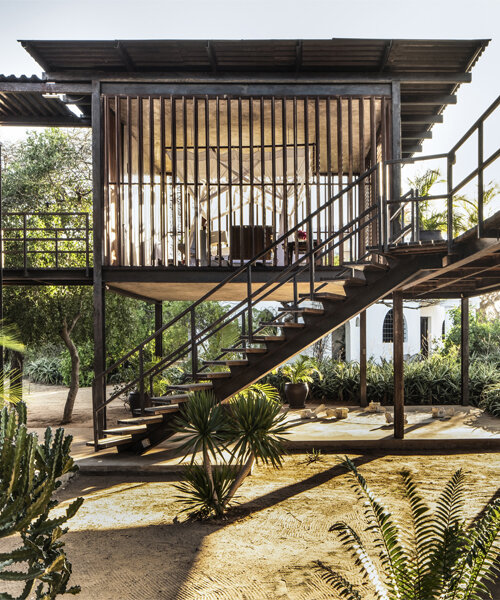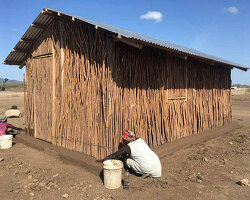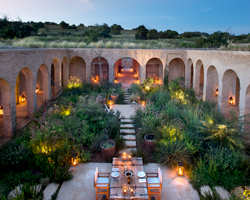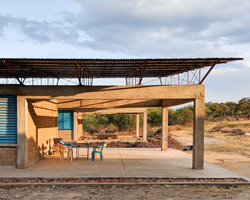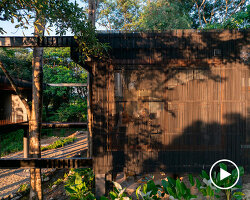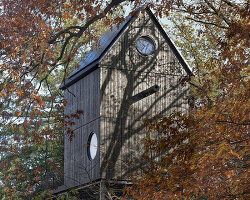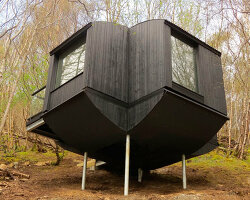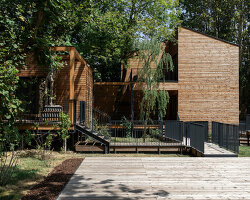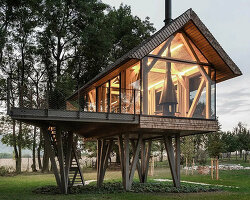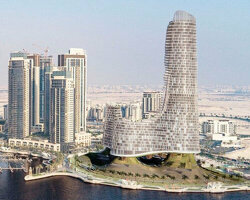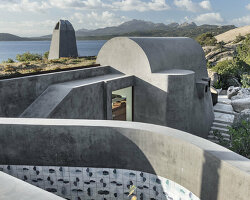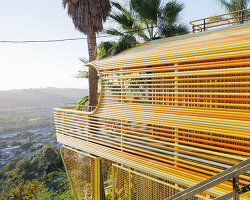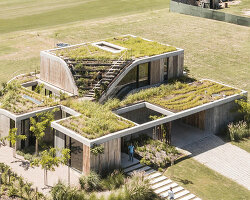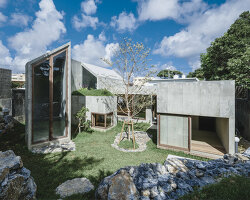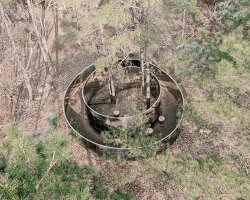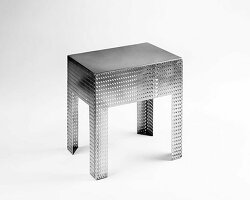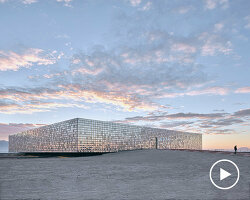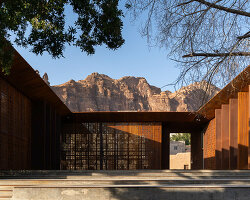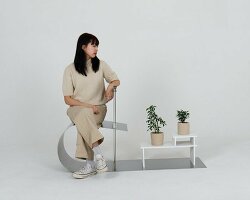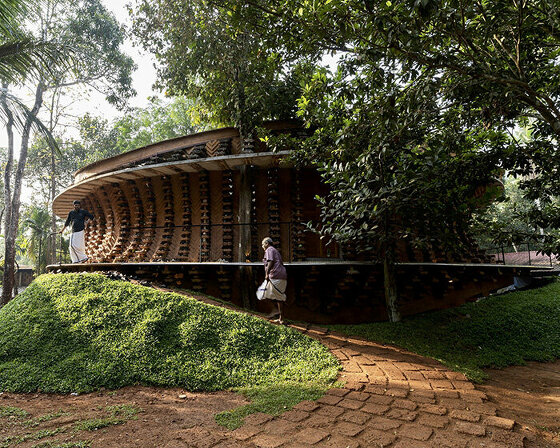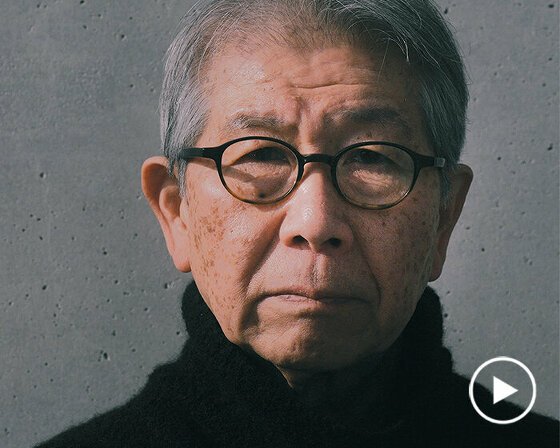inside falcon house by PAT. and Ferdinando Fagnola
Falcon House emerges on Kenya‘s Manda Island as a collaborative project between PAT. architetti associati in and architect Ferdinando Fagnola. Overlooking the ancient city of Lamu in Kenya, on an island without electricity or running water, the stilted residence ingeniously harnesses the forces of nature. It adapts to its conditions, embracing contemporary forms and materials that engage with local culture without succumbing to exoticism or contrived traditionalism. The resulting design, rising among the canopies of acacia and baobab trees, ultimately reinterprets elements of tropical modernism through the dedicated involvement of local artisans and businesses.
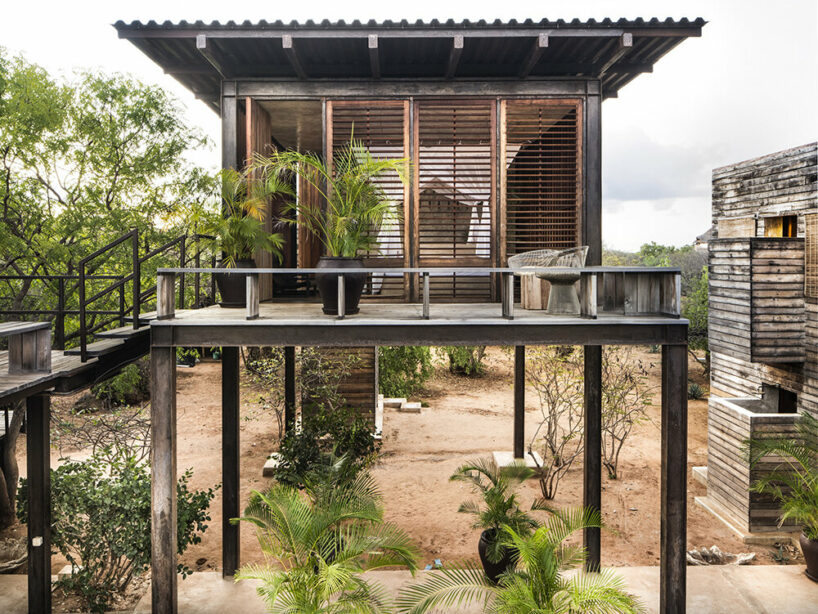
all images © Filippo Romano
a suspended pavilion-style design made of steel
The architectural layout of Falcon House reveals separate, raised rooms, allowing the prevailing winds (the Kaskazi, blowing from the northeast between December and March, and the Kusi, blowing from the south between April and September) to naturally cool the rooms, eliminating the need for air conditioning. Electricity, generated through photovoltaic panels, powers a desalination system, converting seawater into potable water for domestic use. Rainwater collected in tanks also contributes to the water supply. The house is a scattered assembly of individual pavilion-style structures, each elevated to approximately 3 meters above ground on steel stilts, carefully positioned to harmonize with the existing acacia and baobab trees. In crafting this suspended landscape, PAT. (see more here) and Ferdinando Fagnola subsequently opted for a steel construction system. This decision not only emphasized the house’s distinctive design language but also ensured a more cost-effective construction process, including carefully disassembly pre-existing bungalows to salvage their wooden planks.
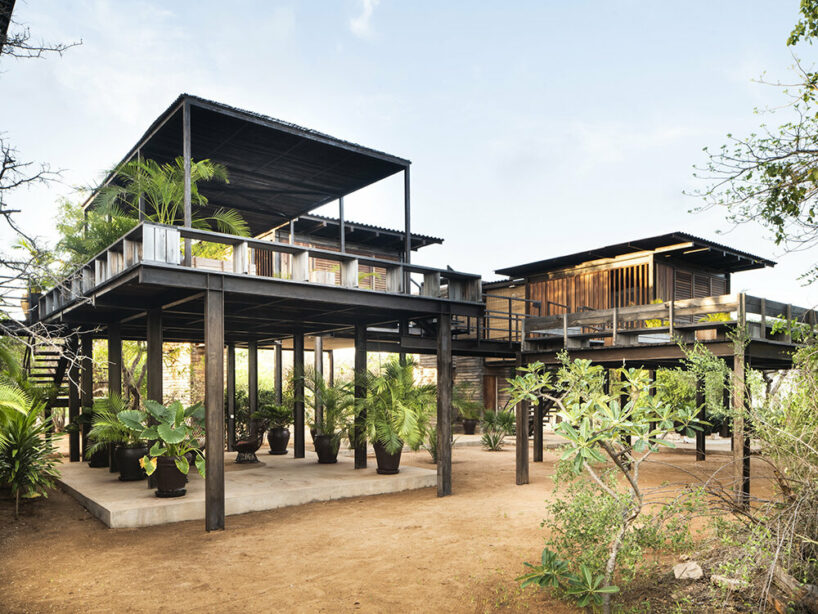
Falcon House is a stilted architecture by PAT. and Ferdinando Fagnola
The pavilions and terraces at varying elevations link up via a straight walkway. Service and served spaces sit distinctly separated, with bathrooms and wardrobes in turrets behind the rooms, connected by small bridges. The rooms, elevated to the level of the tree canopies, are sheltered under a flat concrete roof, insulated on the outer layer, supporting a ventilated roofing system made of corrugated corten steel, designed to keep the rooms shaded throughout the day. The ceilings and floors are cast-in-place concrete, while the south wall comprises on-site prefabricated concrete blocks created by local craftsmen using custom wooden formwork. The shaded and ventilated concrete mass acts as a thermal flywheel, helping regulate the room’s microclimate, with adjustable wooden slats on the east and west walls. Four large pivot doors allow the north facade to open onto the sea-facing terraces. The adjustable louvers allow for the control of natural light and ventilation. This adaptable and manually operated climate control system, developed with local artisans, resulted from various mock-ups to arrive at the chosen solutions.
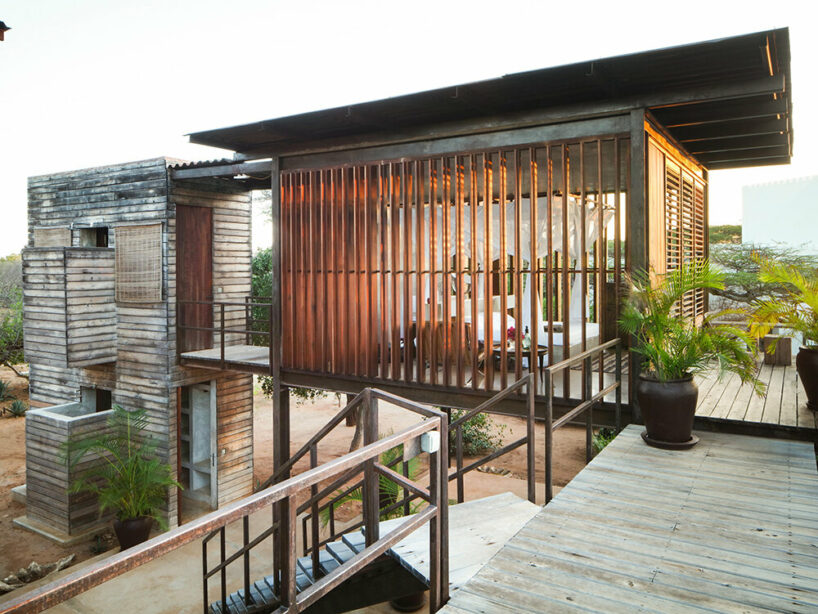
the pavilions and terraces at varying elevations link up via a straight walkway
External decks and the bathroom tower cladding feature reclaimed wood from on-site structures and locally abundant, renewable eucalyptus wood, avoiding the use of over-exploited species like mangroves. Iroko wood, known for its durability, was selectively used for sunshade fins to ensure the system’s longevity. Falcon House was built alongside the renovation and expansion of the original mid-20th-century ‘white house’ in the Swahili style of Lamu. The white house integrates into the pavilion system. It offers sheltered living spaces on the ground floor, including a dining room with a large cast-in-place concrete table, a cinema room, and a library. The utility building, an independent pavilion behind the residence, was demolished and reconstructed on the same site. It houses the kitchen and now incorporates the new technological core of the house, which includes a photovoltaic rooftop, a battery storage room, a desalination system, and a water tower.
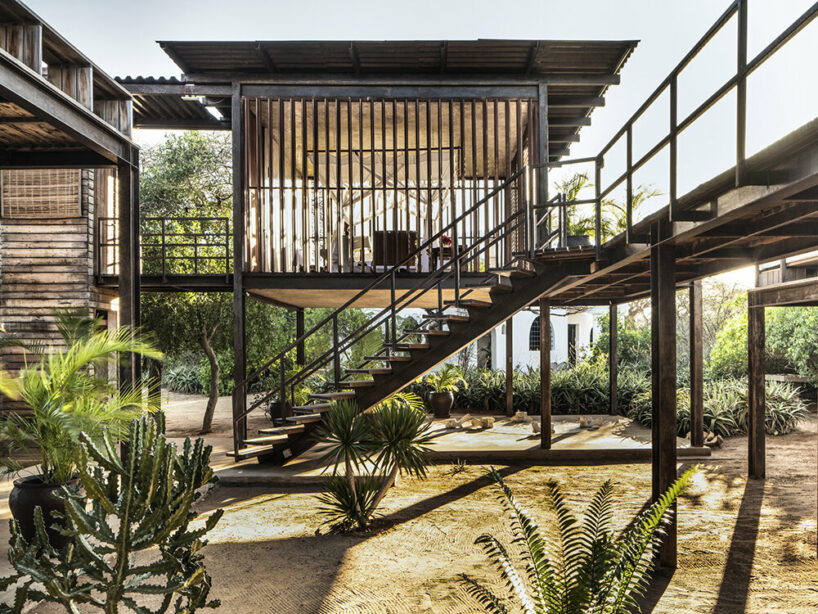
adopting a cost-effective construction system
utilizing local knowledge and expertise in kenya
Falcon House is distinctive on the island’s coast for various reasons, not limited to its design. The client, an heir to a Milanese family deeply connected to the city’s history and the Italian fashion industry, is a passionate contemporary art enthusiast who spent summers at the family house in Sardinia. However, what captured his imagination were other houses – those designed by Ferdinando Fagnola and Gianni Francione in the 1970s, recently renovated by Fagnola in collaboration with PAT. These brutalist shells blended with the coastal topography, nestling among the vegetation and granite, disappearing entirely from view from the sea. Years later, when the client wished to construct a house in Kenya, he strongly desired a profound connection with the land, reimagined within the equatorial environment. This led him to commission Ferdinando Fagnola himself and PAT. After a collaborative conceptual phase, PAT. successfully completed the project, incorporating modern forms and materials that could pair up with the natural and cultural surroundings, avoiding any hint of exoticism or forced traditionalism.
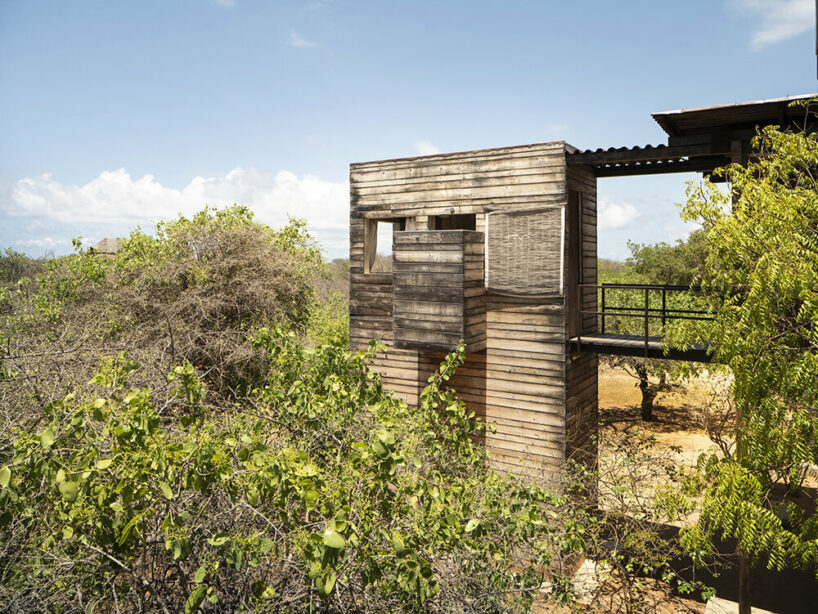
external decks and the bathroom tower cladding feature reclaimed wood from on-site structures
falcon house, a symbol of self-sufficiency & smart materiality
This new project by PAT. is entirely off-the-grid, accessible only by sea, being isolated from any infrastructure, including roads. The house represents a dedication to complete energy and technical self-sufficiency. It draws inspiration from the beach houses designed by Craig Ellwood and Paul Rudolph, with a particular emphasis on research regarding steel-framed residential architecture, microclimates, and natural ventilation—research influenced by the work of Pierre Koenig, who has been an influential figure for Andrea Veglia since his early studies in California. Falcon House reinterprets valuable insights from a sometimes forgotten modernity with which PAT. maintains a close dialogue.

The selection of materials and technologies plays a crucial role here, influencing not just the architectural language but also tapping into local expertise and resources, circularity, and sustainability, encompassing both its innovative elements and its respect for tradition. While wood was initially considered, the challenges of sourcing FSC-certified timber in the required sections and the high cost led to a serious consideration of steel construction, initially seen as impractical. While steel is not commonly used in residential architecture in Kenya, several local manufacturers offer systems of prefabricated houses with a hidden lightweight metal structure behind a traditional façade. Standard hot-rolled profiles are typically used in industrial and infrastructural constructions. The general contractor readily approved the change to steel, which led to fewer columns, extended spans, enhanced spatial flexibility, and resolved concerns about fungi and termites. This change resulted in a 30% cost reduction and a departure from any potential vernacular style.
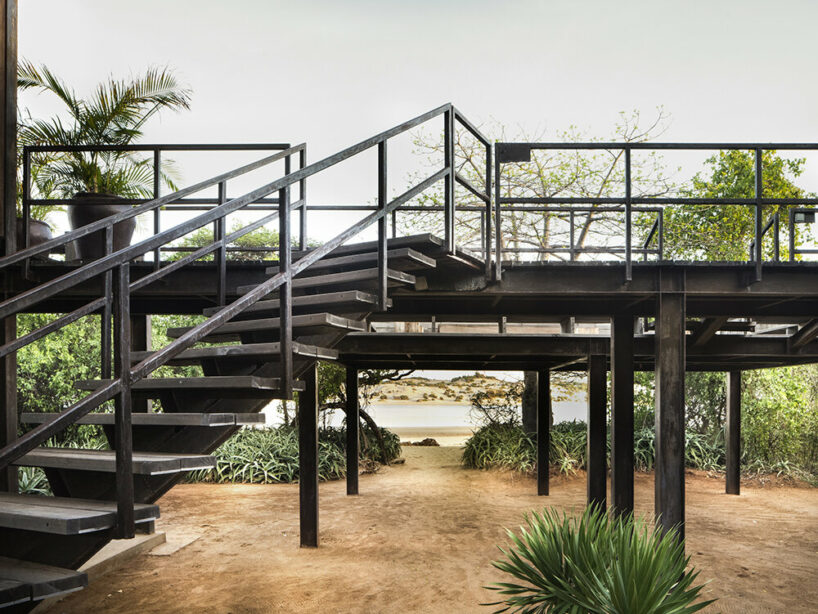
dynamic staircase framing tropical views of Manda Island
The steel components are fabricated in a workshop just a few kilometers away, transported by boat, and assembled on-site. In constructing the external decks and cladding for the bathroom tower, eucalyptus wood, an abundant and renewable local resource, was chosen, in addition to reclaimed wood from the dismantled existing structures on site. This approach avoids using endangered species like mangroves, which are overused. The stronger and more resilient iroko wood was specifically reserved for crafting the sunshade fins to ensure the system’s durability. Local craftsmen employed two-centimeter opposing and coupled boards to fashion counterbalanced slats, ensuring long-term dimensional stability. The entire wooden wall system is adjustable and manually operated using mechanisms inspired by simplicity and attention to detail, including wooden pins and sliding handles. The southern walls offer shelter and promote ventilation within the different volumes; they consist of custom-made concrete blocks manufactured on-site to match the thickness of the steel columns. These blocks are intentionally spaced apart, forming a pattern of openings for air to flow through the interiors.
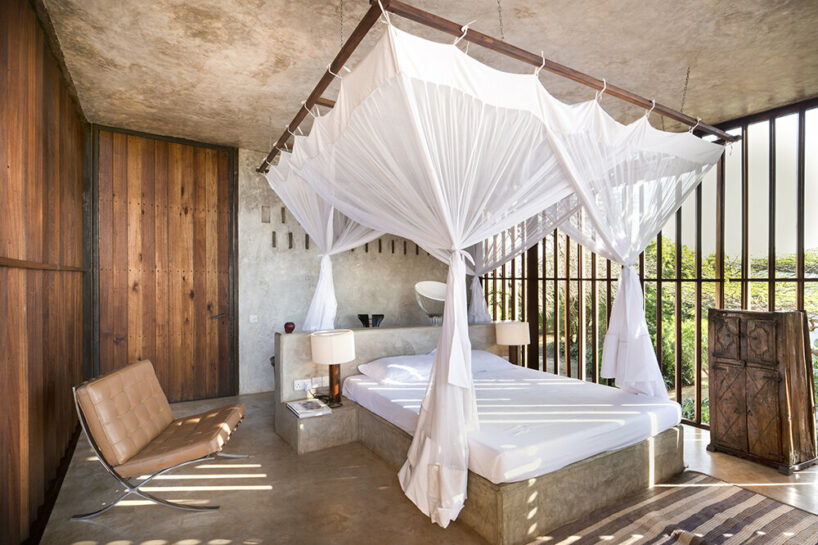
Falcon House reveals separate, raised rooms
Tradition arises through ‘niru,’ a smooth stucco finish that complements the clean lines of the new structures, adorning the walls, masonry elements, and even the interiors of the more traditional buildings, conveying a sense of solidity and intimacy. Instead of relying on complex mechanical systems, climate control is achieved through the structures’ orientation, shading, and natural ventilation, returning the project to the traditions of tropical modernism that the widespread use of air conditioning has overshadowed. Lastly, electricity required for all domestic uses, from water purification and heating to lighting, is provided by photovoltaic panels. In this context, the utility building adjacent to the house plays a fundamental role: it is a ‘machine for living in and living well,’ with architecture that combines energy production through panels covering the entire roof and resource procurement, completed by the water tower.
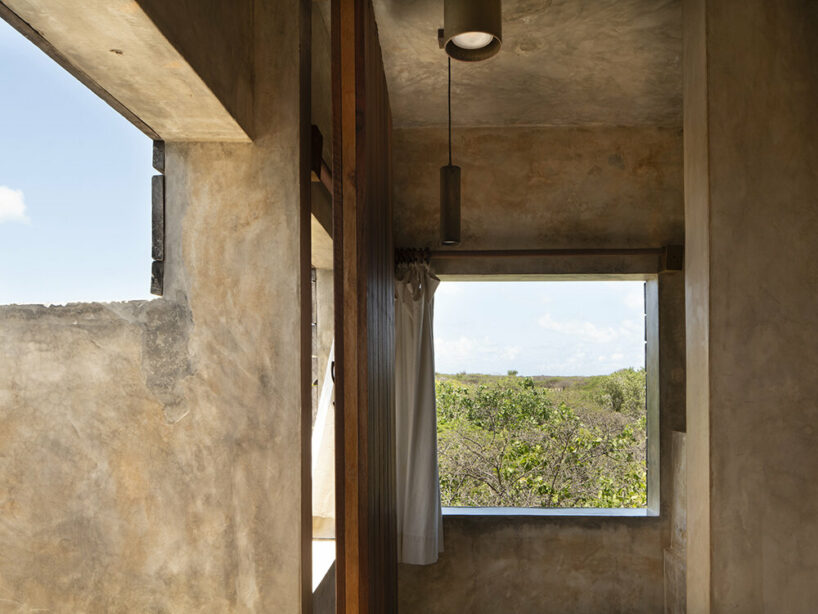
the ceilings and floors are cast-in-place concrete

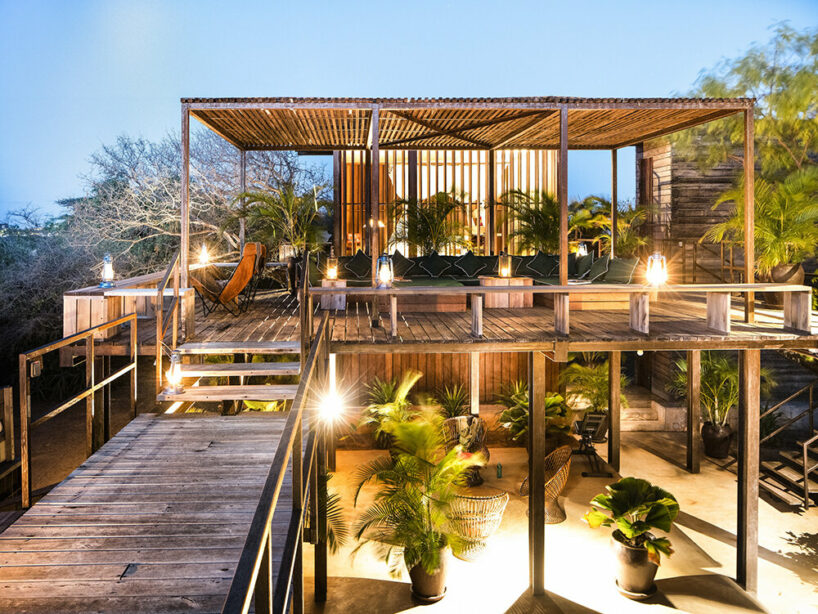
external decks and the bathroom tower cladding feature reclaimed wood from on-site structures
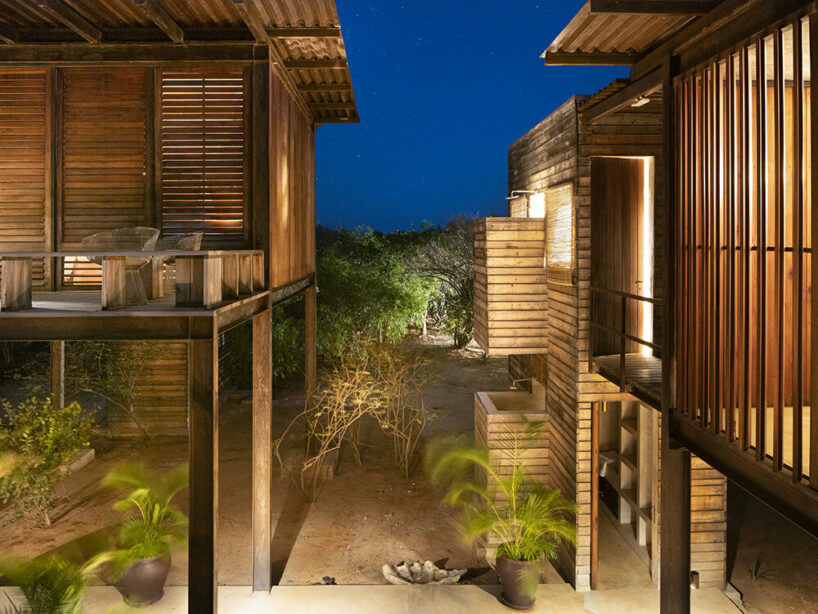
embracing contemporary forms and materials that engage with local culture without succumbing to exoticism

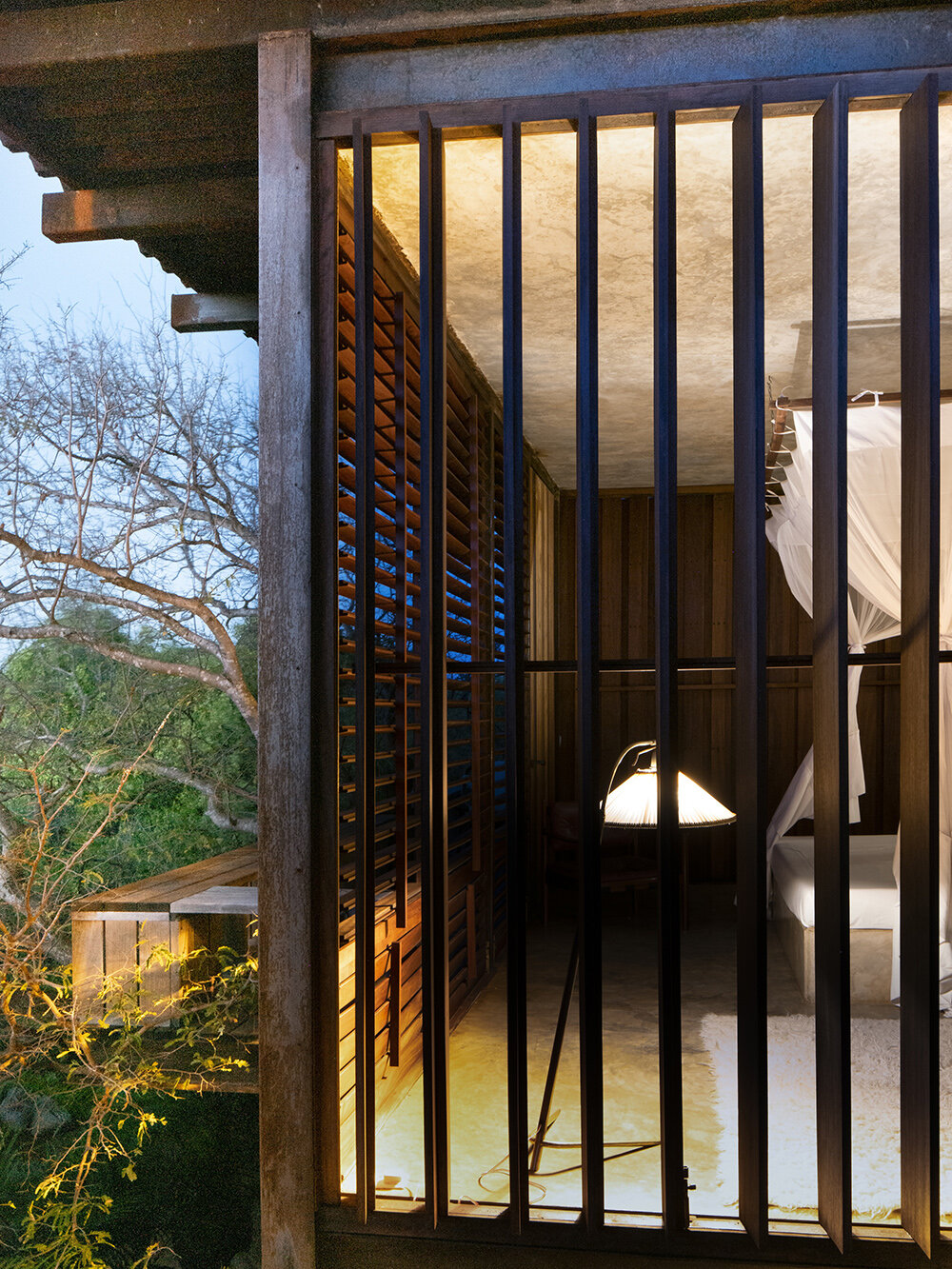
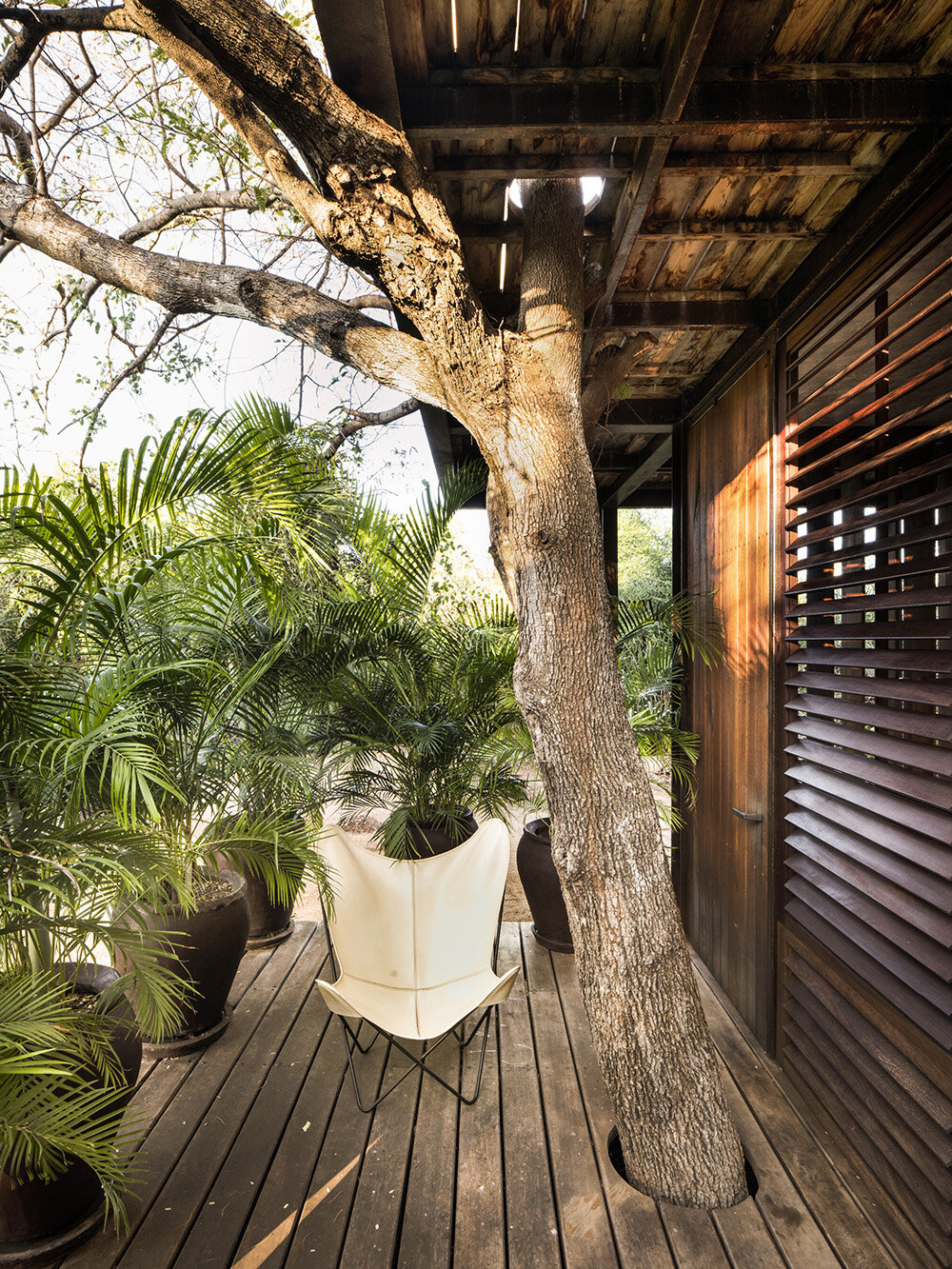
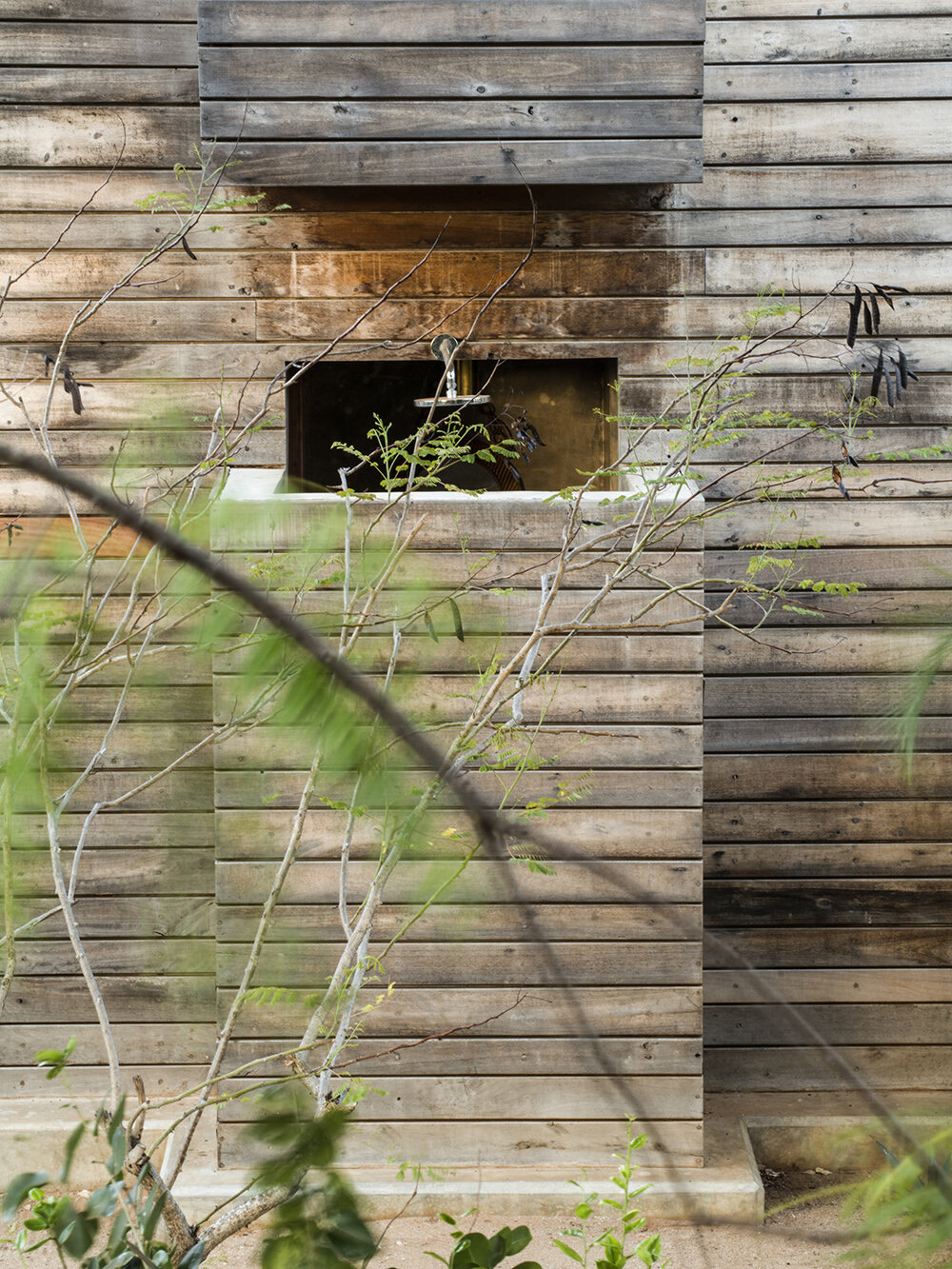
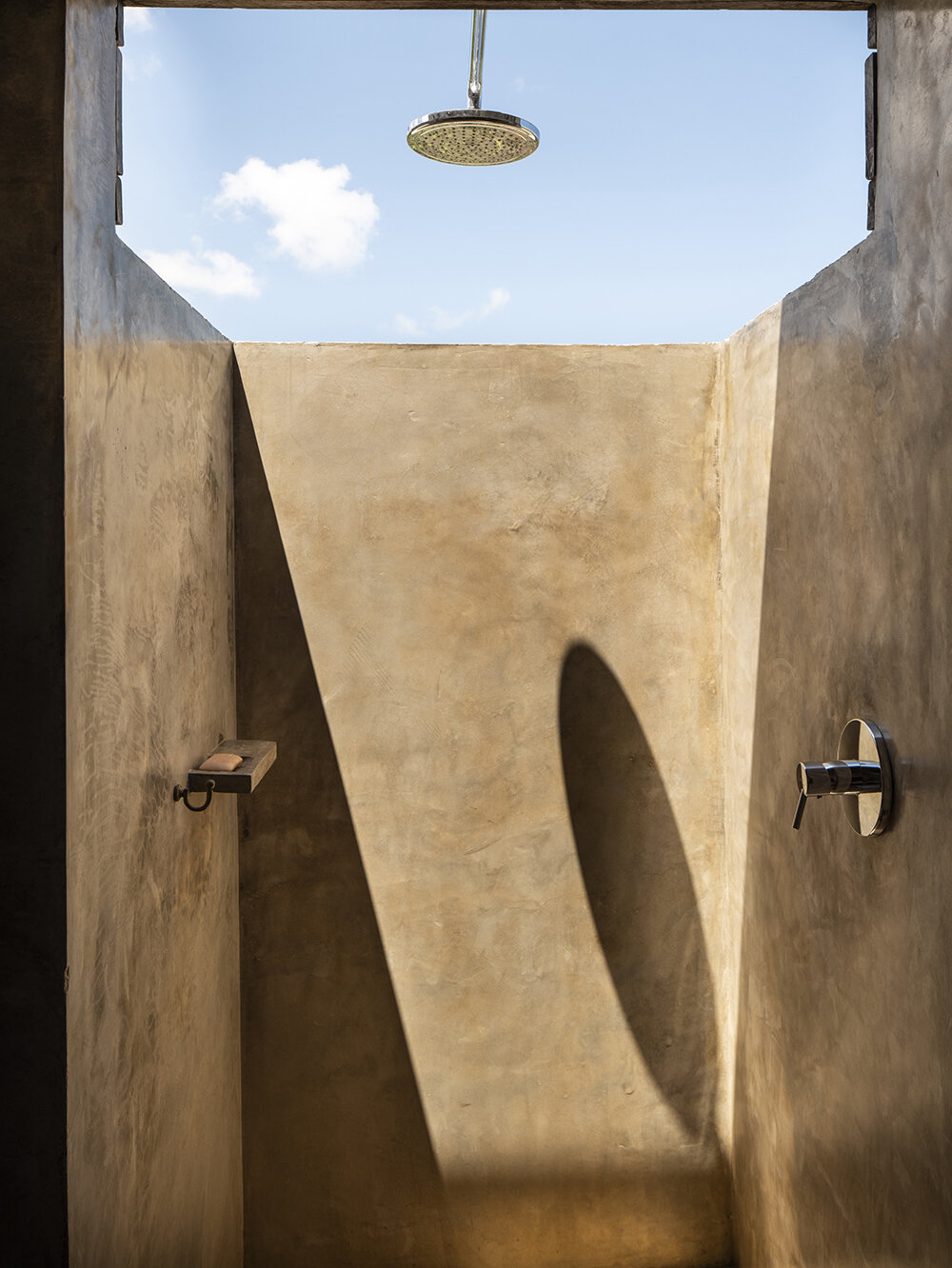
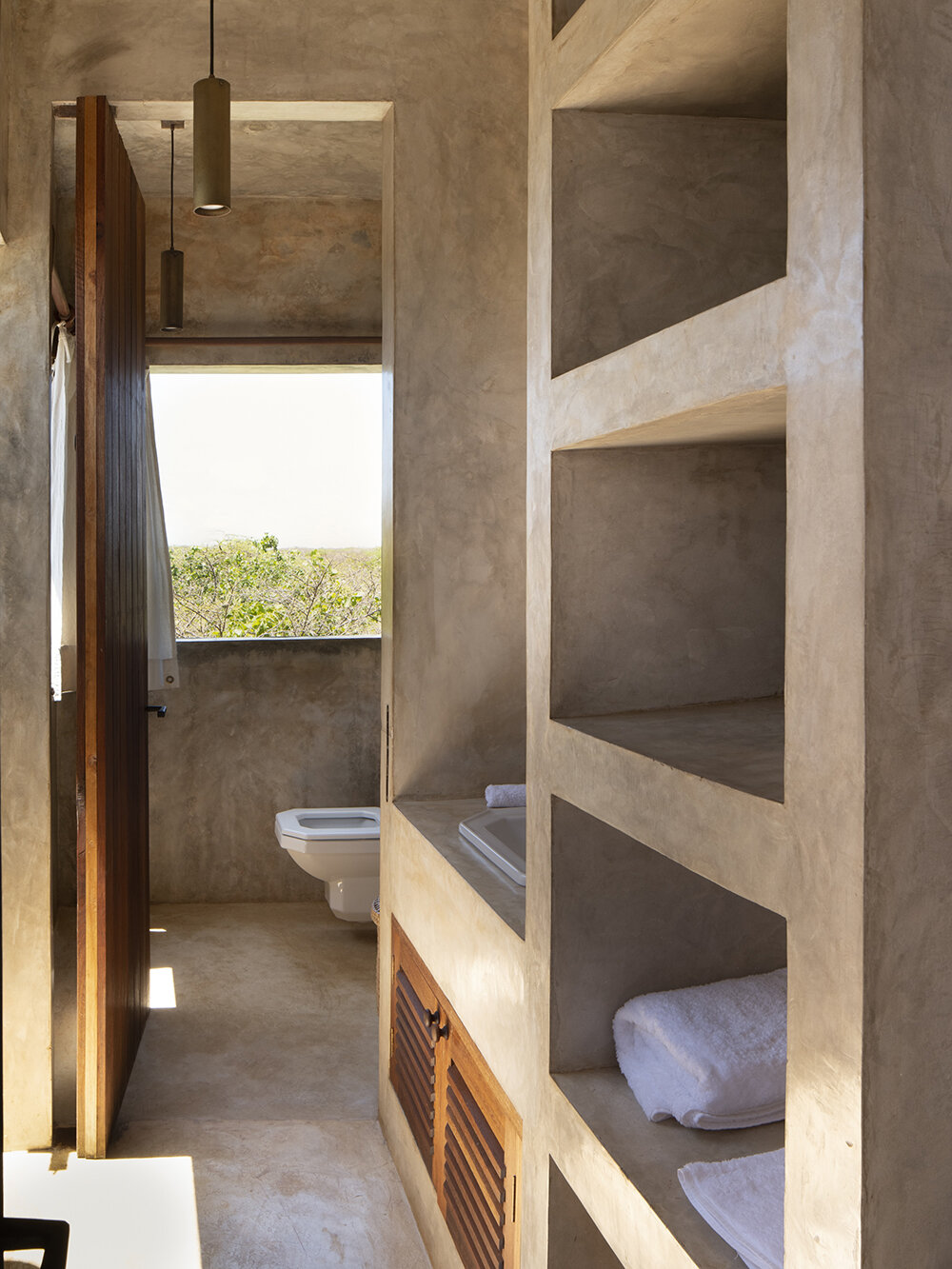
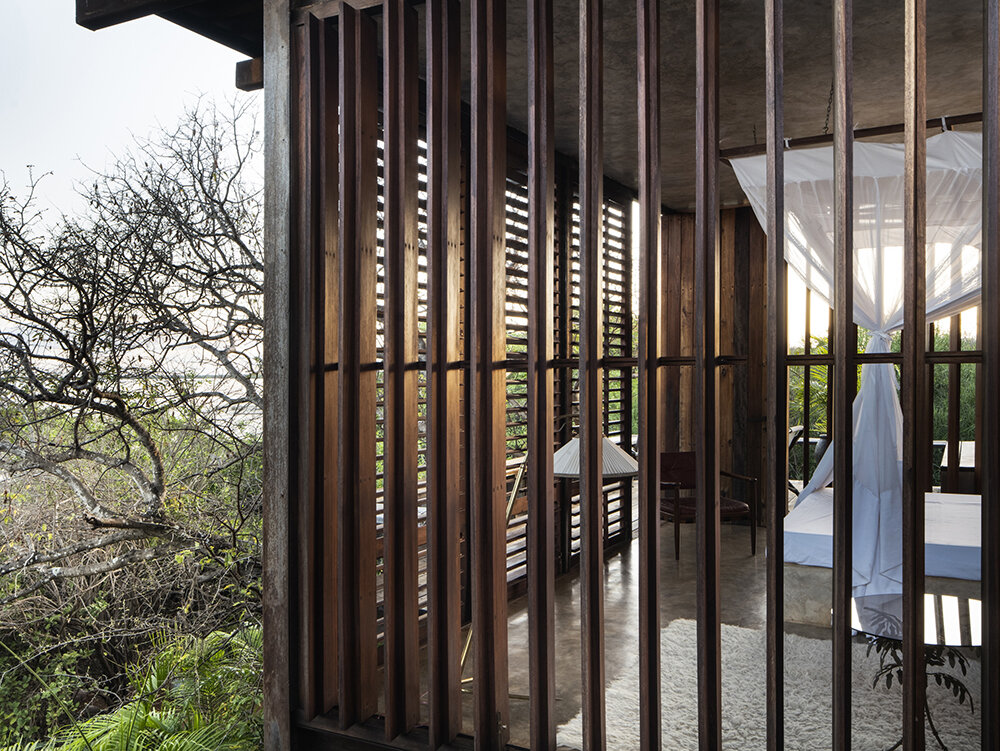
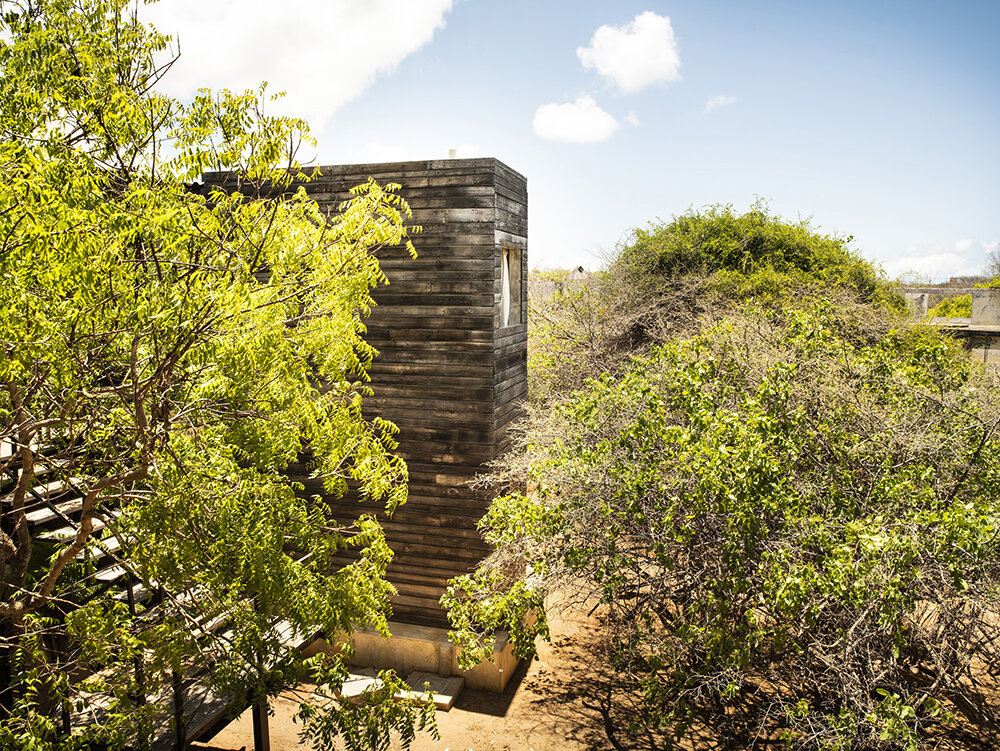
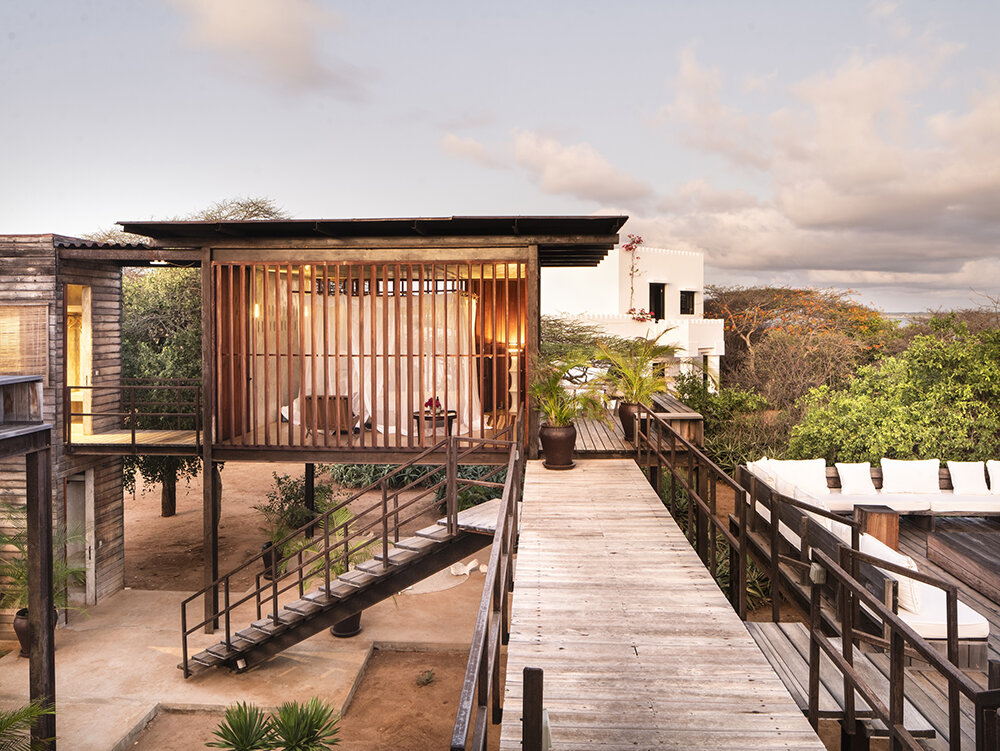
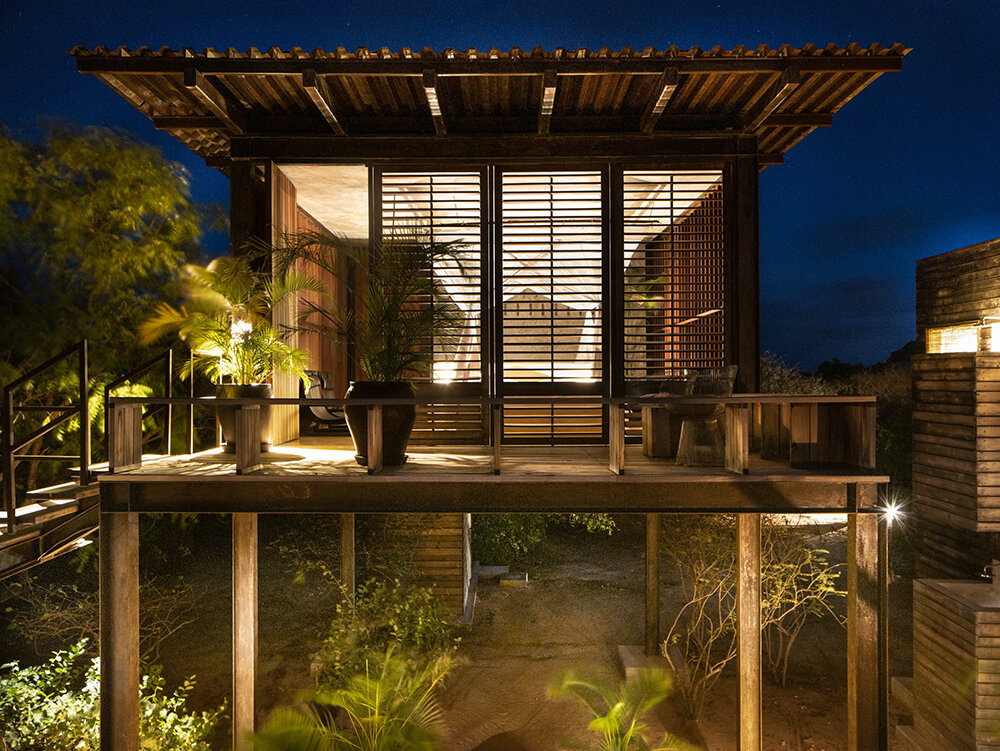
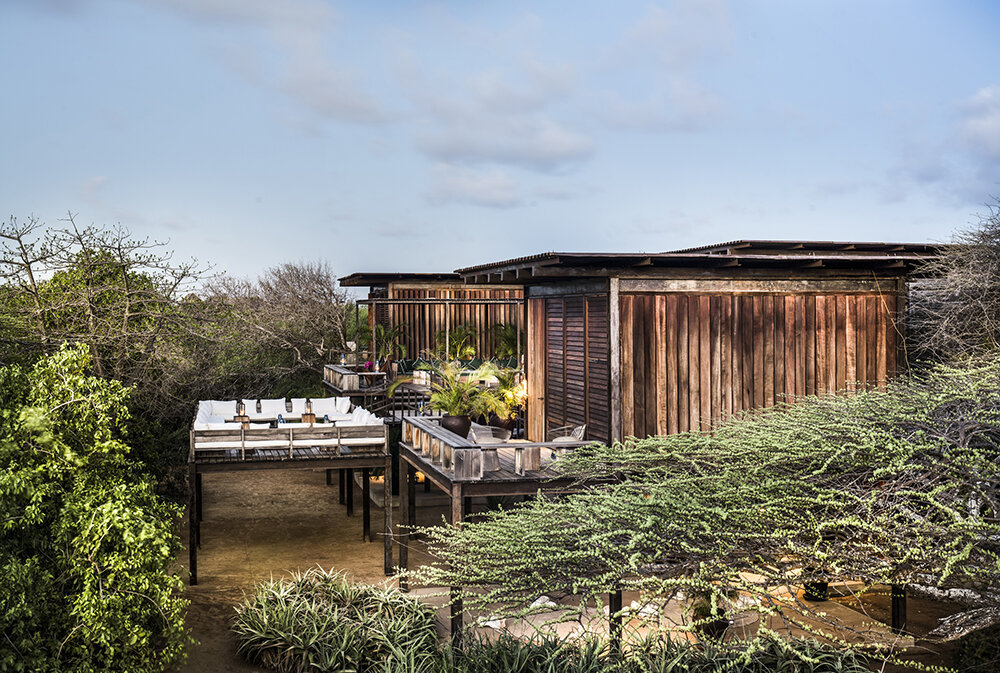
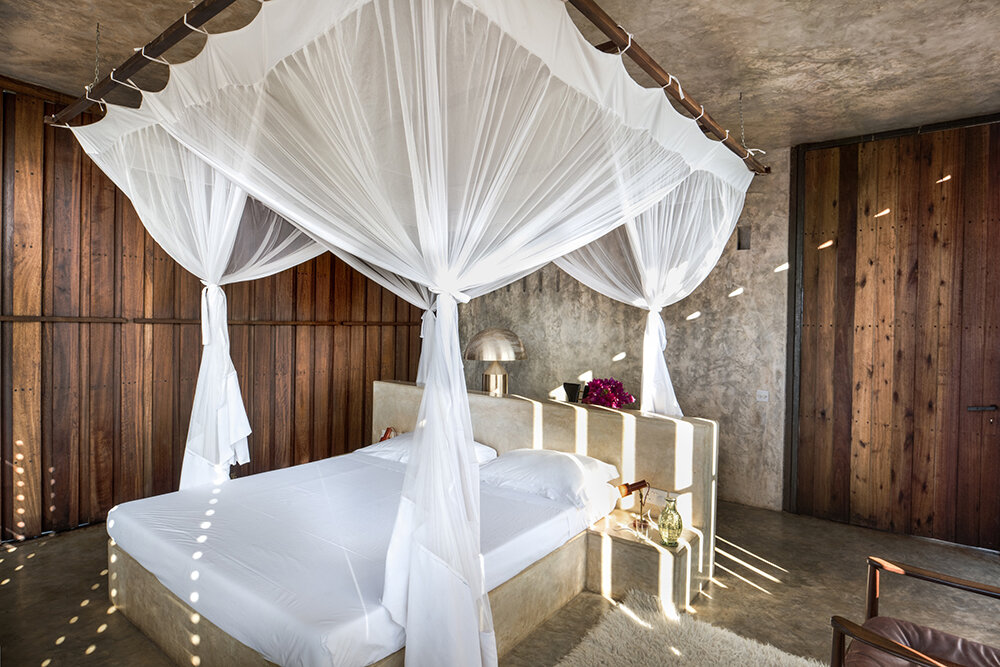
project info:
name: Falcon house
location: Manda Island, Kenya
architects: PAT. architetti associati | @pat.architettiassociati and Ferdinando Fagnola
project coordinator: Andrea Veglia
team: Andrea Veglia, Ferdinando Fagnola, Benedetta Veglia, Jacopo Testa, Luca Rocca, Francesca Thiébat
collaborators: Alice Ferro, Alberto Matta, Nicolò Radicioni, Aleksandra Cheremuchina
architect of record: George Otieno Adede / Otieno Adede Associates
structural engineer: Interphase Consultants
mechanical engineer: Studio Forte
metalworks: Appallan Marine and General Contractors Ltd.
carpentry work: Hussein Safina Craft Ltd.
photographer: Filippo Romano
decorator’s works: Kuresh
design period: 2014 – 2019
construction completion date: December 2022
interior furnishing completion date: May 2023
plot area: 14,800 sqm
Falcon House (total surface area): 320 sqm
White House (total surface area): 210 sqm
Utility building: 160 sqm
ARCHITECTURE IN KENYA (21)
ARCHITECTURE ON STILTS (78)
RESIDENTIAL ARCHITECTURE AND INTERIORS (3769)
STEEL ARCHITECTURE AND DESIGN (214)
PRODUCT LIBRARY
a diverse digital database that acts as a valuable guide in gaining insight and information about a product directly from the manufacturer, and serves as a rich reference point in developing a project or scheme.
